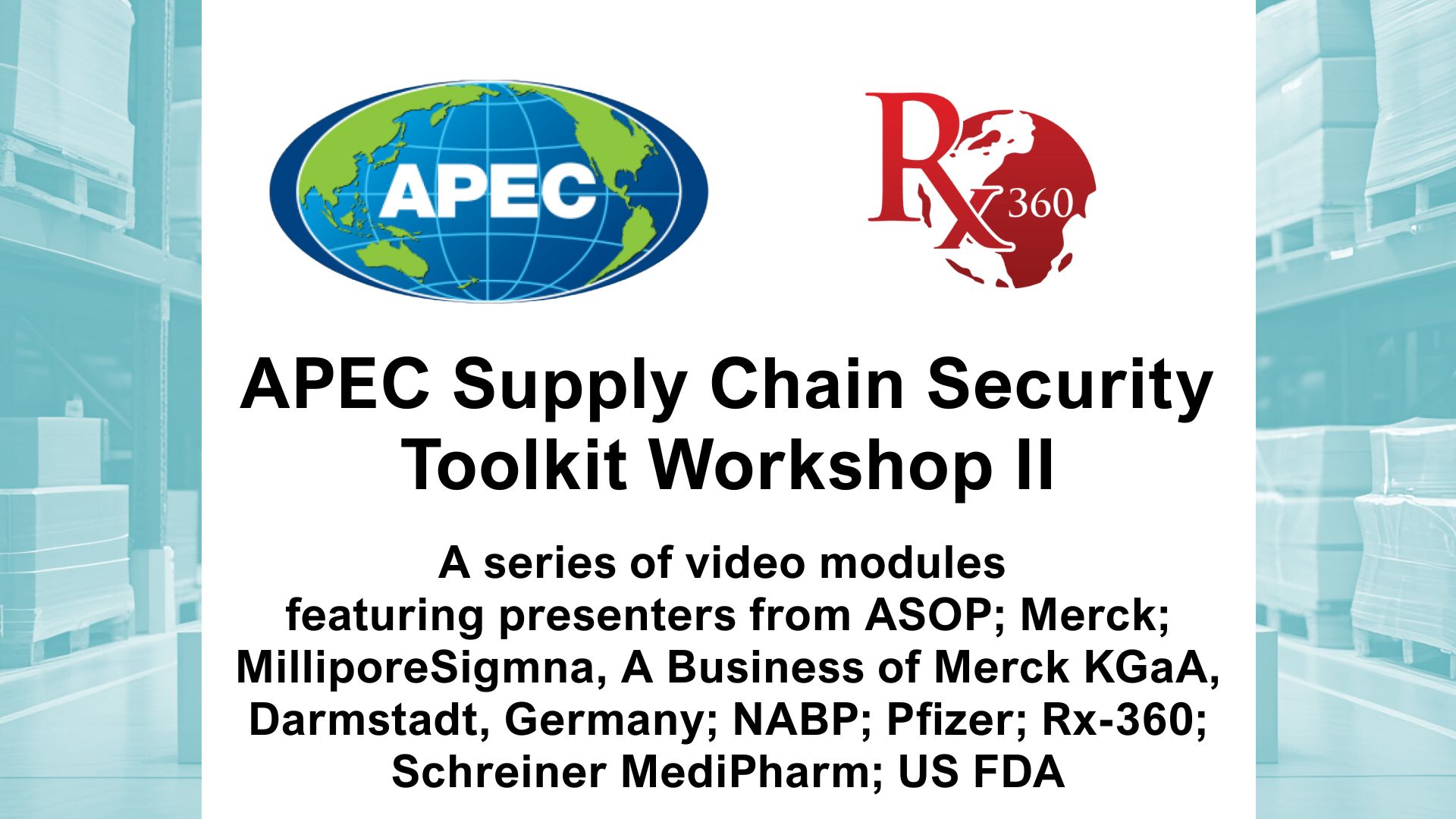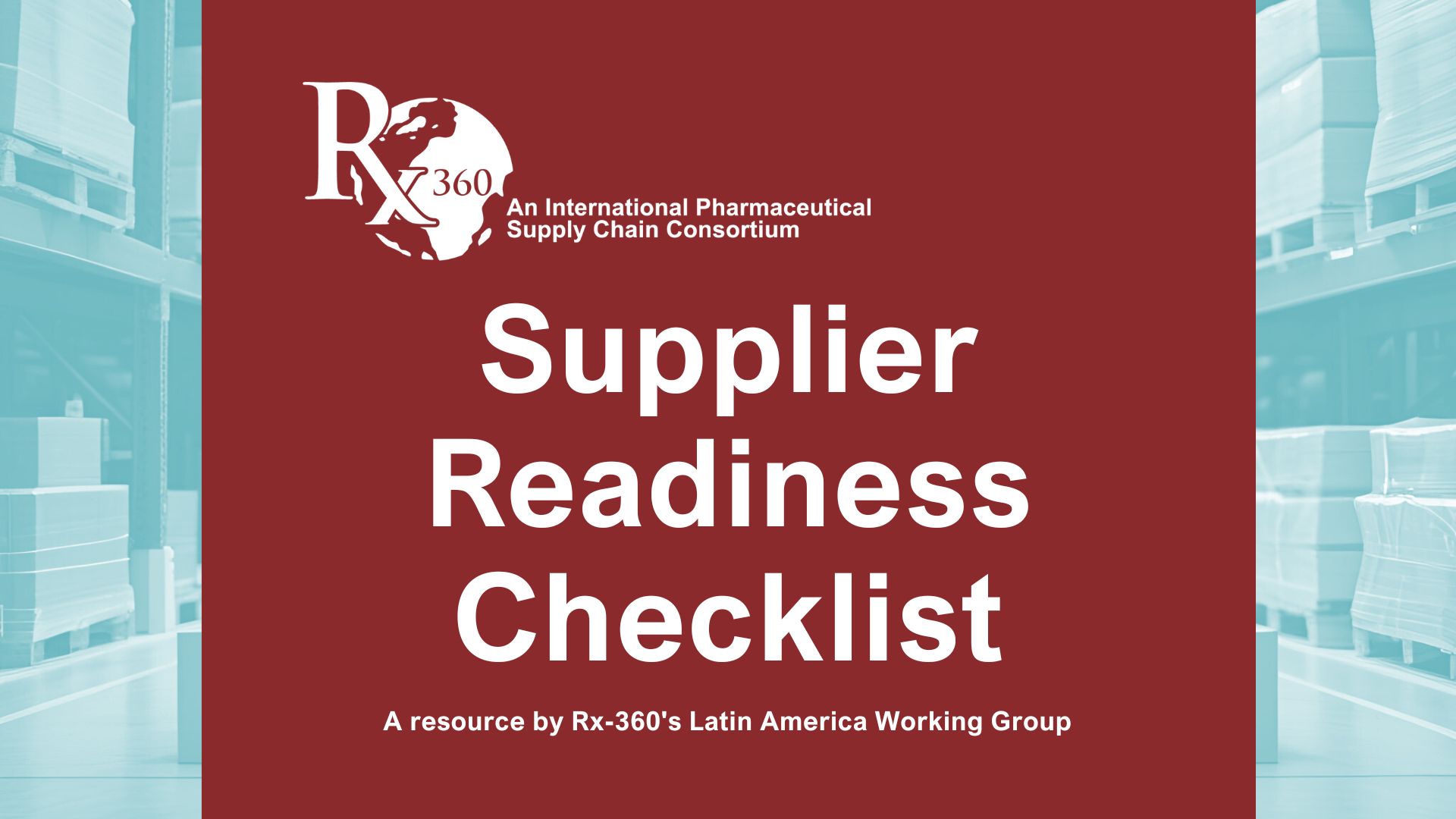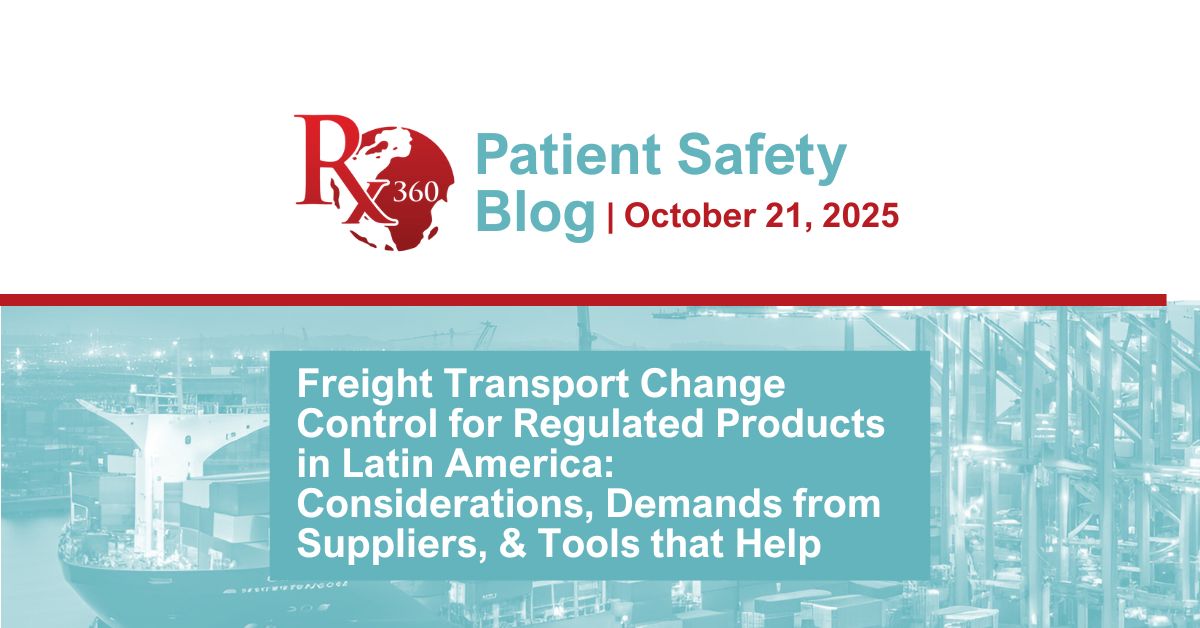Overview
Welcome to the Supplier Quality Working Group
The Supplier-Led Working Group is an Rx-360 working group consisting of members from both pharmaceutical companies and leading suppliers to the pharmaceutical industry. Through this Working Group, both pharmaceutical and supplier members share perspectives and work collaboratively to achieve greater efficiencies in the supply chain and to better serve patients in the long-term.
The Supplier Quality Working Group is currently working on module 5 – single-use systems. We are currently seeking members for this group.
If you are interested in joining this Working Group please contact us at info@rx-360.org
Watch thESE Brief Member TestimonialS
“I’m a very active member in the supplier quality working group. It’s benefited me by being able to be part of the solution by helping to shape the quality and regulatory compliance landscape that we all have to work within.”
Jennifer Goodman, Senior Director of Quality at Avantor
“Being a part of the Supplier Quality Working group is amazing, number one for networking and meeting new people. And the second is having a chance to collaborate with our industries because in the end, it’s impact to the patients, right? So, we want to make sure we have information available and everybody can use the resources we make sure are possible and available for everybody.”
Karla Longo Gouveia, Supplier Quality Management at Merck
Supply Chain Security Toolkit Video Modules
Get the tools you need for breaking down the barriers that hold the world back from optimal movement of critical goods and materials. Download the index document to access the video modules listed below that […]
Supplier Readiness Checklist
Use Rx-360’s Supplier Readiness Checklist to ensure that you – the supplier – meet the operational, quality, and compliance standards required industry-leading global pharmaceutical manufacturers. Developed from an industry-leading global pharmaceutical manufacturer’s supplier management standard […]
Freight Transport Change Control for Regulated Products in Latin America: Considerations, Demands from Suppliers, & Tools that Help
The trend of shifting from air to ocean and ground freight in Latin America is gaining momentum, driven by cost pressures, infrastructure improvements, and strategic supply chain diversification.
Part 1 – What’s happening:
📉 Decline in Air Freight Reliance
· Cost Sensitivity: Air freight remains significantly more expensive than ocean transport. As Latin American companies face tighter margins and inflationary pressures, many are opting for slower but cheaper ocean routes.
· Post-Pandemic Adjustments: The pandemic exposed vulnerabilities in air cargo capacity, prompting businesses to explore more resilient multimodal strategies.
🚢 Rise in Ocean Freight Adoption
· Infrastructure Investments: Countries like Brazil, Colombia, and Mexico are investing in port modernization and expanding container capacity, making ocean freight more viable.
· Multimodal Logistics Growth: Companies are increasingly blending ocean, rail, and road transport to create flexible, cost-effective supply chains. This shift is especially pronounced during peak seasons like year-end holidays.
🔄 Strategic Diversification
· Risk Mitigation: Latin American logistics leaders are diversifying transport modes to reduce dependency on any single route or carrier. This includes shifting regulated and non-urgent goods to ocean freight to free up air capacity for time-sensitive shipments.
· Environmental Goals: Ocean freight’s lower carbon footprint supports corporate sustainability initiatives, which are gaining traction across the region.
⚠️ Challenges to Watch
· Port Congestion: Despite improvements, some ports still face bottlenecks and customs delays.
· Weather & Political Disruptions: Natural disasters and political unrest remain risks for ocean logistics in certain countries.
Part 2 – Things to consider:
Transporting regulated products—such as pharmaceuticals, chemicals, medical devices, or hazardous materials—requires heightened attention when shifting from air to ocean freight. Here’s a detailed checklist to guide your transition:
⚠️ Regulatory & Compliance Considerations
· International Maritime Regulations: Ensure compliance with IMO (International Maritime Organization) rules, including the IMDG Code for dangerous goods.
· Customs Documentation: Ocean freight often requires more detailed paperwork, including Bills of Lading, Certificates of Origin, and Material Safety Data Sheets (MSDS).
· Licensing & Permits: Verify that your product is permitted for ocean transport and that all necessary import/export licenses are in place.
· Country-Specific Restrictions: Some countries have stricter maritime import rules for regulated goods than for air cargo.
🧊 Packaging & Handling Requirements
· Durability for Longer Transit: Packaging must withstand longer exposure to humidity, temperature fluctuations, and rough handling.
· Temperature Control: If your product is temperature-sensitive (e.g., vaccines, biologics), ensure availability of reefer containers and validated cold chain logistics.
· Hazard Labeling: Ocean freight requires specific hazard labels and placards that differ from air freight standards.
⏱️ Timing & Inventory Planning
· Extended Lead Times: Ocean freight is slower, so plan for longer delivery cycles and adjust inventory buffers accordingly.
· Shelf-Life Concerns: Products with short shelf lives may not be suitable for ocean transport unless cold chain is guaranteed.
📦 Carrier & Route Selection
· Specialized Carriers: Choose carriers experienced in handling regulated goods and familiar with maritime compliance.
· Transshipment Risks: More stops and handling points increase the risk of damage, delay, or regulatory issues.
🔒 Risk Management & Insurance
· Marine Insurance: Ensure coverage for loss, damage, and regulatory non-compliance during ocean transit.
· Security Protocols: Ocean freight may be more vulnerable to theft or tampering—especially in high-risk ports.
🌍 Sustainability & ESG Goals
· Carbon Footprint: Ocean freight is more eco-friendly than air, which may align better with corporate sustainability targets.
Part 3 – What to ask from your vendors:
When transitioning regulated products from air to ocean freight, you’ll need to gather precise, compliance-critical information from both your suppliers and transport providers. Here’s a detailed breakdown of what to request:
📦 From Suppliers
1. Product Classification & Regulatory Details
· Harmonized System (HS) code
· Dangerous Goods classification (UN number, hazard class)
· Applicable regulations (e.g., FDA, EPA, DEA, REACH, ADR)
2. Documentation
· Material Safety Data Sheet (MSDS) or Safety Data Sheet (SDS)
· Certificate of Analysis (CoA)
· Import/export licenses or permits
· Product-specific handling instructions
3. Packaging Specifications
· Packaging type and compliance with IMDG Code
· Temperature control requirements (e.g., cold chain, reefer container)
· Tamper-evident seals or security features
4. Shelf Life & Stability Data
· Expiry dates and stability under extended transit conditions
· Acceptable temperature/humidity ranges
5. Labeling Requirements
· Maritime-compliant hazard labels and placards
· Country-specific labeling rules for ocean freight
🚢 From Transport Providers (Freight Forwarders, Carriers, etc.)
1. Compliance Capabilities
· Experience handling regulated products under IMDG, IATA, and local laws
· Certifications (e.g., ISO 9001, GDP for pharmaceuticals)
2. Container Options
· Availability of specialized containers (reefer, insulated, ventilated)
· Container tracking and monitoring systems
3. Transit Time & Routing
· Estimated transit time and port schedules
· Transshipment points and associated risks
· Contingency plans for delays or disruptions
4. Insurance & Liability
· Marine cargo insurance coverage for regulated goods
· Clauses for temperature excursions, contamination, or regulatory seizure
5. Customs & Documentation Support
· Assistance with customs clearance and regulatory paperwork
· Electronic data interchange (EDI) capabilities for real-time updates
6. Security Protocols
· Chain of custody procedures
· Port security measures and theft prevention
Part 4 – Tools that can help:
When transitioning regulated products from air to ocean freight, you’ll need to gather precise, compliance-critical information from both your suppliers and transport providers. Here’s a detailed breakdown of what to request:
📋 1. Supplier Assessment
· Criteria Evaluated
o Quality of goods or services
o Delivery performance and reliability
o Financial stability
o Compliance with regulations (e.g., environmental, labor)
o Technical capabilities and innovation
o Cost competitiveness
o Risk management practices
Methods Used:
o On-site audits
o Questionnaires and self-assessments
o Performance scorecards
o Third-party certifications (e.g., ISO standards)
· Benefits:
o Reduces supply chain risks
o Improves product quality and consistency
o Enhances supplier relationships
o Supports strategic sourcing decisions
📃 2. Quality Agreement
· Identify potential risks associated with the proposed change.
· Evaluate the likelihood and impact of each risk.
· Use qualitative (e.g., risk matrix) or quantitative (e.g., probability-impact analysis) tools to assess severity.
🔍 3. Risk Assessment
· Identify potential risks associated with the proposed change.
· Evaluate the likelihood and impact of each risk.
· Use qualitative (e.g., risk matrix) or quantitative (e.g., probability-impact analysis) tools to assess severity.
🧠 4. Mitigation Strategy
· Create action plans to reduce or eliminate identified risks.
· Assign responsibilities and timelines for mitigation efforts.
· Examples include testing new systems before rollout or training staff ahead of changes.
📊 5. Risk Priorities
· Focus on high-impact, high-likelihood risks first.
· Use tools like risk scoring or heat maps to visualize and rank risks.
🔄 6. Controls
· Put mitigation strategies into action.
· Continuously monitor the change process to detect emerging risks.
· Adjust controls as needed based on feedback and performance.
🧰 7. Contingency Plan
· Prepare backup plans for critical risks that can’t be fully mitigated.
· Include rollback procedures, alternative workflows, or emergency response protocols.
📣 8. Communications
· Keep stakeholders informed throughout the change process.
· Transparent communication helps reduce resistance and uncover hidden risks.
📈 9. Follow Up
· After implementation, review what worked and what didn’t.
· Document lessons learned to improve future change control efforts.
These methods form a comprehensive framework for managing risk in change control, helping organizations adapt while minimizing disruption.


